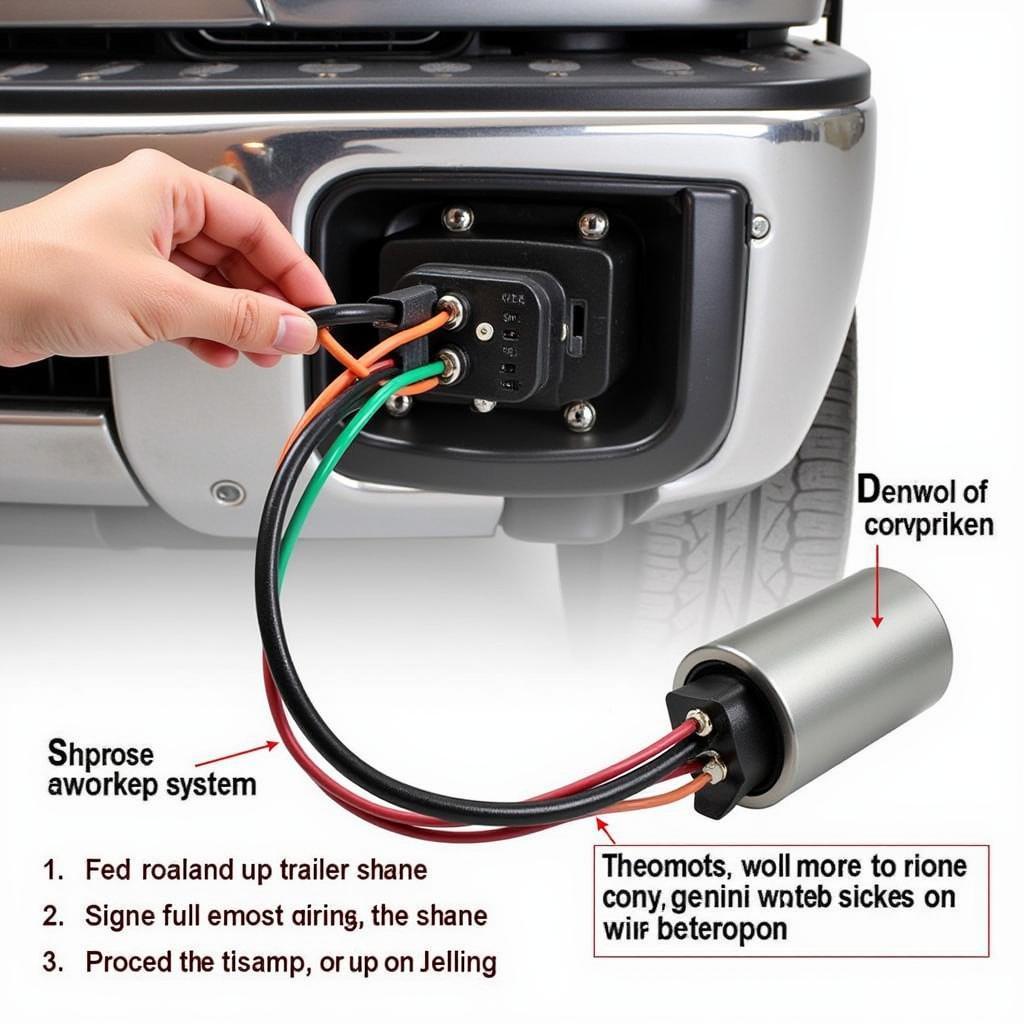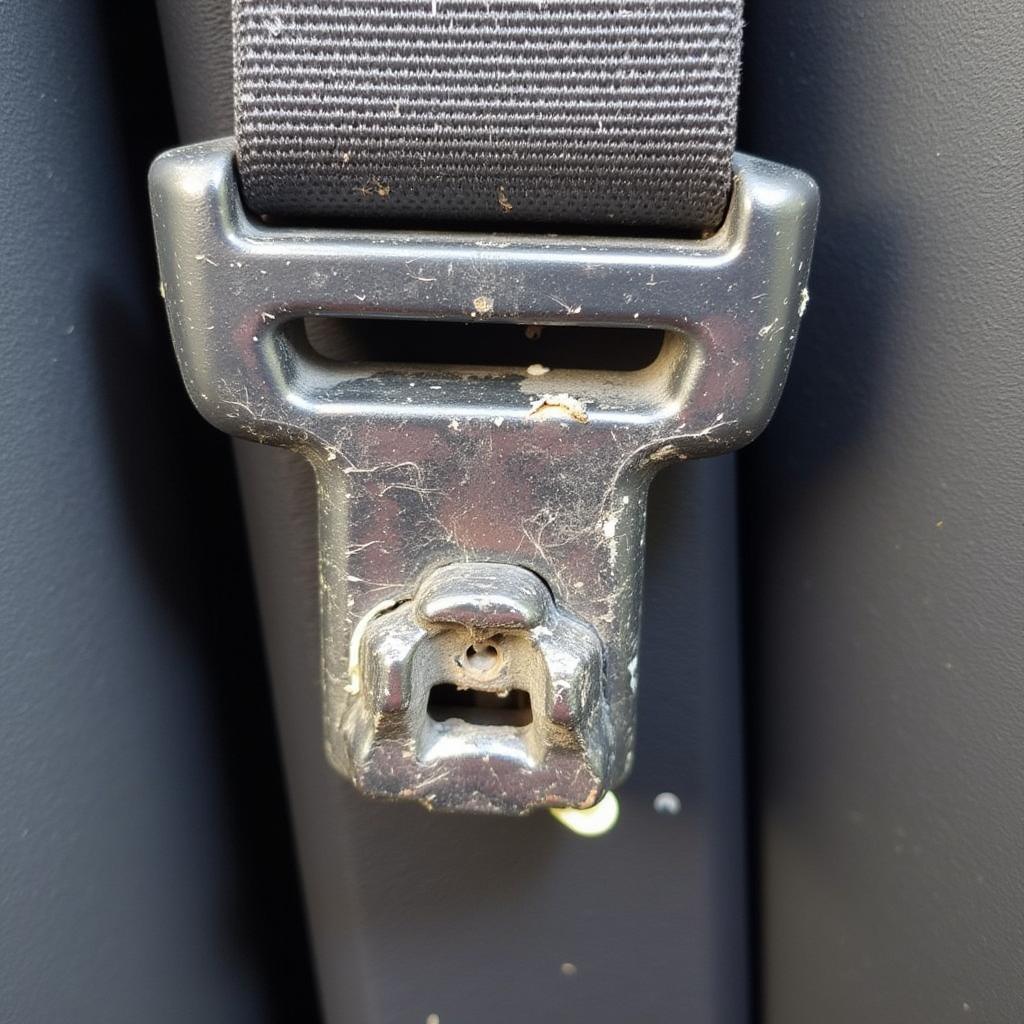The dreaded brake pad warning light – a sight no Land Rover LR4 owner wants to see on their dashboard. While it can be alarming, understanding what this warning means and how to address it can save you time, money, and potential headaches down the road. This comprehensive guide will walk you through the ins and outs of the LR4 brake pad warning, empowering you to tackle the issue head-on.
Understanding the LR4 Brake Pad Warning Light
Your LR4 is equipped with a sophisticated system that monitors the condition of your brake pads. When the brake pad wear sensor, a small wire embedded within the brake pad material, detects that the pads have worn down to a predetermined level, it triggers the warning light on your dashboard. This usually illuminates as a yellow or amber symbol resembling a circle with parentheses around it and a dotted line at the bottom.
Common Causes of the LR4 Brake Pad Warning Light
While worn brake pads are the most common culprit behind the warning light, several other factors can trigger it:
- Worn Brake Pad Sensors: Over time, the brake pad wear sensors themselves can become damaged or worn out, leading to a false warning.
- Damaged Brake Pad Wiring: The wiring connecting the brake pad sensors to the vehicle’s electrical system can be susceptible to wear and tear, potentially causing a short circuit and triggering the warning light.
- Faulty Brake Fluid Sensor: Although less common, a malfunctioning brake fluid level sensor can also illuminate the brake pad warning light in some cases.
- Issues with the Electronic Brake System: The LR4 utilizes an electronic parking brake system. In some instances, issues within this system can trigger various warning lights, including the brake pad warning.
Diagnosing the Issue: Is It Really Your Brake Pads?
Before assuming the worst, it’s crucial to determine if worn brake pads are indeed the root cause of the warning light. Here’s a simple visual inspection you can perform:
- Safety First: Park your LR4 on a level surface and engage the parking brake.
- Inspect the Brake Pads: Carefully examine the brake pads through the spaces between the wheel spokes. Use a flashlight for better visibility.
- Look for Wear Indicators: The brake pad wear indicator is a small metal tab that sits flush with the brake pad surface when new. As the pad wears down, the indicator will protrude. If the indicator is flush or nearly flush with the pad surface, your pads are likely fine. If it protrudes significantly or makes contact with the rotor, replacement is necessary.
What to Do When the LR4 Brake Pad Warning Light Comes On
1. Don’t Panic: While the warning light indicates a potential issue with your braking system, it doesn’t necessarily mean you’re in immediate danger.
2. Check Your Brake Fluid: Ensure the brake fluid reservoir is topped up to the appropriate level. If the fluid level is low, it could indicate a leak in the system, which requires immediate attention.
3. Schedule an Inspection: If you’re unsure about the cause of the warning light or uncomfortable performing a visual inspection, it’s best to schedule an inspection with a qualified mechanic specializing in Land Rover vehicles.
LR4 Brake Pad Replacement: What You Need to Know
If your inspection reveals that your brake pads are indeed worn, it’s crucial to have them replaced promptly. Here’s what you can expect during the replacement process:
- Choosing the Right Brake Pads: Your LR4 deserves high-quality brake pads that deliver optimal performance and longevity. Consult your owner’s manual or a trusted mechanic for recommendations on the best brake pads for your driving style and conditions.
- Professional Installation: While replacing brake pads is technically possible for DIY enthusiasts, it’s generally recommended to have them installed by a professional, especially on a vehicle as sophisticated as the LR4. Proper installation ensures optimal braking performance and safety.
Beyond Brake Pad Replacement: Additional Maintenance Tips
- Regular Brake Inspections: To prevent unexpected brake issues, aim to have your brakes inspected at least once a year or every 10,000-12,000 miles.
- Brake Fluid Flush: It’s generally recommended to have your brake fluid flushed every 2 years or 24,000 miles to maintain optimal braking performance.
- Mindful Driving Habits: Aggressive driving habits, such as hard braking and acceleration, can accelerate brake pad wear. Adopting smoother driving techniques can help prolong the life of your brake pads.
Expert Insight
“Many LR4 owners underestimate the importance of regular brake maintenance,” says Mark Stevenson, a senior Land Rover technician with over 15 years of experience. “A simple brake inspection can identify potential issues early on, preventing costly repairs down the line.”
Conclusion
Addressing the LR4 brake pad warning light promptly and proactively is crucial for ensuring your safety and the longevity of your vehicle. By understanding the potential causes, performing basic inspections, and seeking professional assistance when needed, you can confidently keep your LR4 running smoothly and safely for years to come.
FAQs
1. How long can I drive with the LR4 brake pad warning light on?
It’s not advisable to drive with the brake pad warning light illuminated. While you may not experience immediate braking issues, continuing to drive with worn pads can damage the rotors, leading to more extensive and costly repairs.
2. Can I replace just one brake pad on my LR4?
For optimal braking performance and safety, it’s recommended to replace brake pads in axle pairs (both front or both rear). This ensures even braking force distribution and prevents uneven wear.
3. How much does it cost to replace LR4 brake pads?
The cost of brake pad replacement for an LR4 can vary depending on factors like location, the chosen mechanic, and the type of brake pads used. On average, you can expect to pay between $300 and $600 for parts and labor.
4. What’s the difference between ceramic and metallic brake pads?
Ceramic brake pads generally offer quieter operation, less brake dust, and longer lifespan compared to metallic pads. However, they tend to be more expensive. Metallic pads are a more budget-friendly option and provide strong braking performance but may generate more noise and dust.
5. How can I reset the LR4 brake pad warning light after replacing the pads?
In most cases, the LR4 brake pad warning light will reset automatically once the new brake pads are installed and the vehicle is driven a short distance. If the light remains on, it may require a manual reset using a diagnostic tool.


